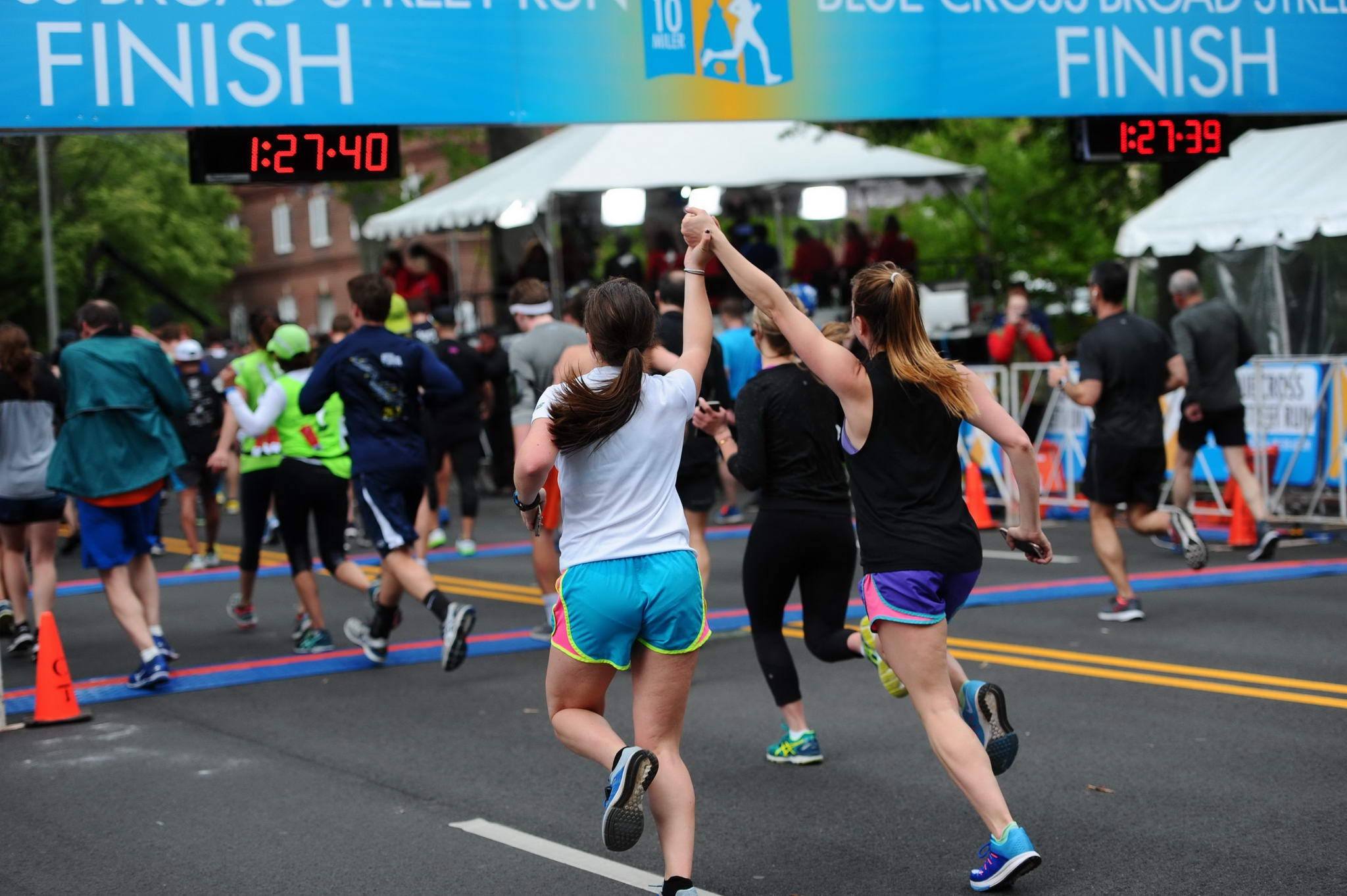The Broad Street Run Is Over. Here’s What to Do Next.
Running coach Cory Smith tells you how to keep your motivation up and your muscles fresh.

This year’s Broad Street Run is over. Here’s how to keep your running motivation and fitness level up through the summer and fall. / Photograph courtesy of Independence Blue Cross
This week on Be Well Philly, we’ll be featuring all kinds of running-related stories. This is one of them; stay tuned for more.
Congrats to everyone who ran Sunday! I hope all those months of training through the cold paid off. But, uh, now what? You’ve likely spent months of emotional and physical energy preparing for the Broad Street Run and, now that it’s over, you may be feeling drained and wondering what to do next.
First, take a break. Big races like Broad Street take a lot out of you, so I always recommend taking three to five days (at least!) completely off from running after them. These rest days will allow your body to heal, but, more importantly, they’ll give you mental rest. Just like your muscles, your mind only has so much strength. Especially if you’re planning on running a big fall race, you’ll need that stamina again soon. Jumping right back into heavy training means you could risk losing motivation when you need it the most.
Second, set another goal — or two. I believe the key to staying motivated and focused is always having a race you’re committed to doing. Look to break your training into seasons — spring, summer, and fall — with short breaks of no running between each season. I’d recommend starting with your fall plans and working backward, particularly if you’re hoping to run a full marathon or a half-marathon (think: the Philadelphia Marathon, the Rock ’n’ Roll half-marathon, the New York City Marathon, the Steamtown Marathon, etc.).
What you’ll want to do is count the weeks backward from your fall goal race to determine when to start your marathon training. Most marathon training plans don’t exceed 18 weeks (or 12 weeks for a half-marathon), simply because the body and mind can’t handle marathon-training loads for extended periods of time before breaking down or injury occurs. So, if you’re targeting the Philly Marathon in November, you won’t need to start marathon training until mid- to late July. That should include a few warm-up races leading up to the marathon, with, ideally, a half-marathon seven weeks out to test your fitness level and gauge how training has been going.
As previously mentioned, you’ll want to take a short hiatus from running before starting your fall season. I’d recommend three to five days in early July. This break allows any pesky aches and pains or oncoming injuries to subside before you get into hard training.
Now that you’ve got your plans from July to November covered, it’s time to plan out the dog days of summer (May to July). I’d encourage you to have fun with your running during the summer months. You’ll want to maintain the fitness level you attained for Broad Street, so continue running at least four days a week.
However, summer in Philly is a tough time to get in serious training because of the sweltering heat. Don’t plan on setting many personal bests; instead focus on working on your speed and strength. Look to include track sessions, weight training, and plenty of cross training. Focus on shorter races — five-milers, 5Ks, even one-mile runs. There are a bunch of evening races with great crowds in PA towns such as Media, West Chester, and North Wales.
All of this will help you find that motivating fire to run another goal race. Follow the above steps, and you’ll be well on your way.
Cory Smith is the founder of Run Your Personal Best, an online running coaching business that has helped hundreds of runners achieve personal bests in distances ranging from 800 meters to 100 miles. He is a multiple-time NCAA Division One Regional qualifier and two-time National Championship qualifier while at Villanova University. Along with his work for Philadelphia magazine, Cory serves as a running editor for Gear Institute and is a regular contributor for Outside Magazine, Trail Runner, Gear Patrol, and Gear Junkie.


